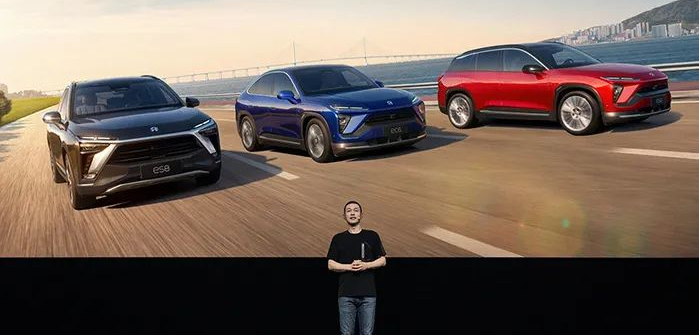Karakush
Li Bin once said that NIO’s long-term rival is Apple.
When it comes to product launches, they seem to be ahead of the game.
Last night, NIO unveiled the ES7.
I remained calm on the surface, my mind focused like an emotionless assassin as I absorbed all the information. It was an experience similar to observing Apple’s new iPhone launches over the past decade.

ES7 doesn’t seem to offer any particularly groundbreaking surprises.
First of all, its positioning is something we’ve known for a long time; it falls between the ES6 and ES8 and is a large five-seater SUV.
Its final price ranges from RMB 468,000 to 548,000, slightly higher than expected. Instead of being evenly positioned between 6/8, it heavily overlaps with the ES8, with just a one thousand yuan difference with the seven-seater version and a two thousand yuan difference with the six-seater version. It should be considered a near-premium five-seater option.
This answers concerns from observers about whether NIO’s larger model would negate the need for the ES8. Compared to the ES8, the demand for five/six/seven-seater options can be naturally differentiated; compared to the ES6, the main selling model won’t face pressure from within the range with a 100,000-yuan gap.
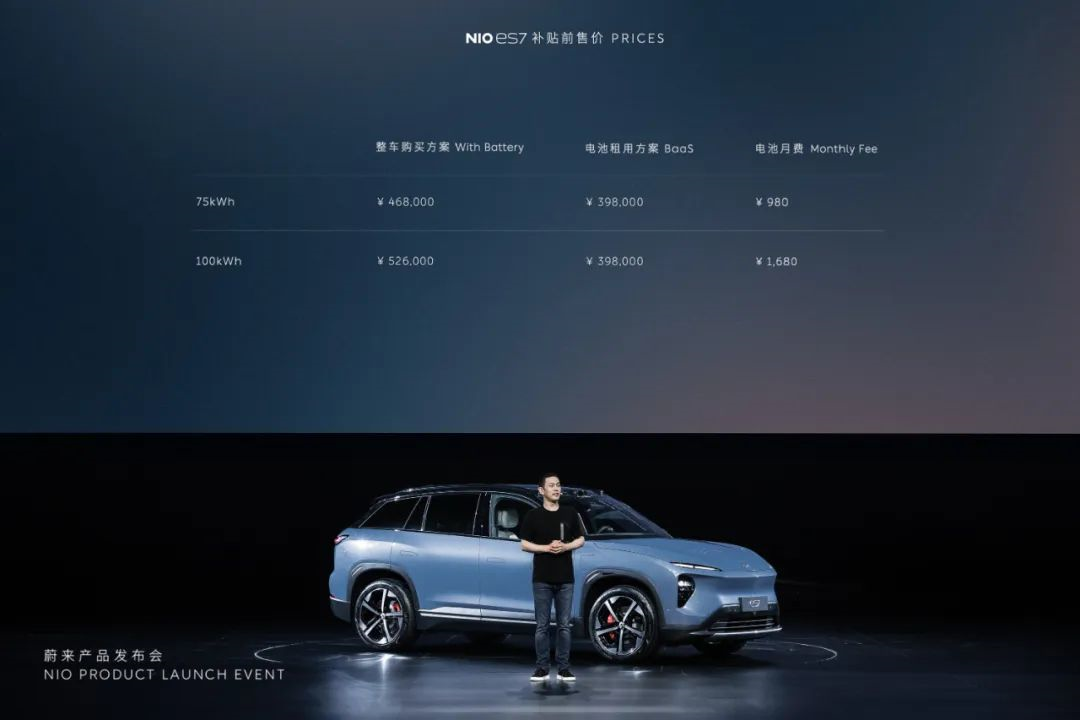
Next, there isn’t a core product feature that you didn’t already know.
The ES7 is based on the NIO NT2.0 platform and is equipped with features that have already been heralded on the ET7 and ET5. However, this is the first time that these features have been integrated into an SUV, resulting in some unprecedented “firsts”. Let’s joyfully review the magnificent specs and parameters:
For instance, it is the first SUV to incorporate the Design for AD concept, with a “watchtower” sensor layout on the forehead.
It is accompanied by the NIO Aquila superperception system. This means that the entire car is equipped with 33 high-performance sensing hardware components, including one ultra-long-distance high-precision laser radar, seven 8-million-pixel high-definition cameras, four 3-million-pixel high-sensitivity ring vision dedicated cameras, one enhanced driver perception, five millimeter-wave radars, 12 ultrasonic sensors, two high-precision positioning units, and V2X vehicle-road collaboration, capable of generating 8GB of image data per second.
There’s also the Adam supercomputing platform with image interfaces capable of processing 6.4 billion pixels per second; the backbone data network can distribute signals to each computing core without losing any data; four NVIDIA Drive Orin chips with a total computing power of 1016TOPS, with two used for calculations, one for redundant backup, and one for group intelligence and personalized training to accelerate evolution speed.On top of the standard configuration, ES7 supports NAD, NIO’s latest autonomous driving technology in ES7 after it goes through verification. It will gradually enable point-to-point autonomous driving scenarios, including highways, urban areas, parking, and battery swapping, which can be subscribed on demand.
ES7 is identical to ET7 and ET5 but is the first SUV model.
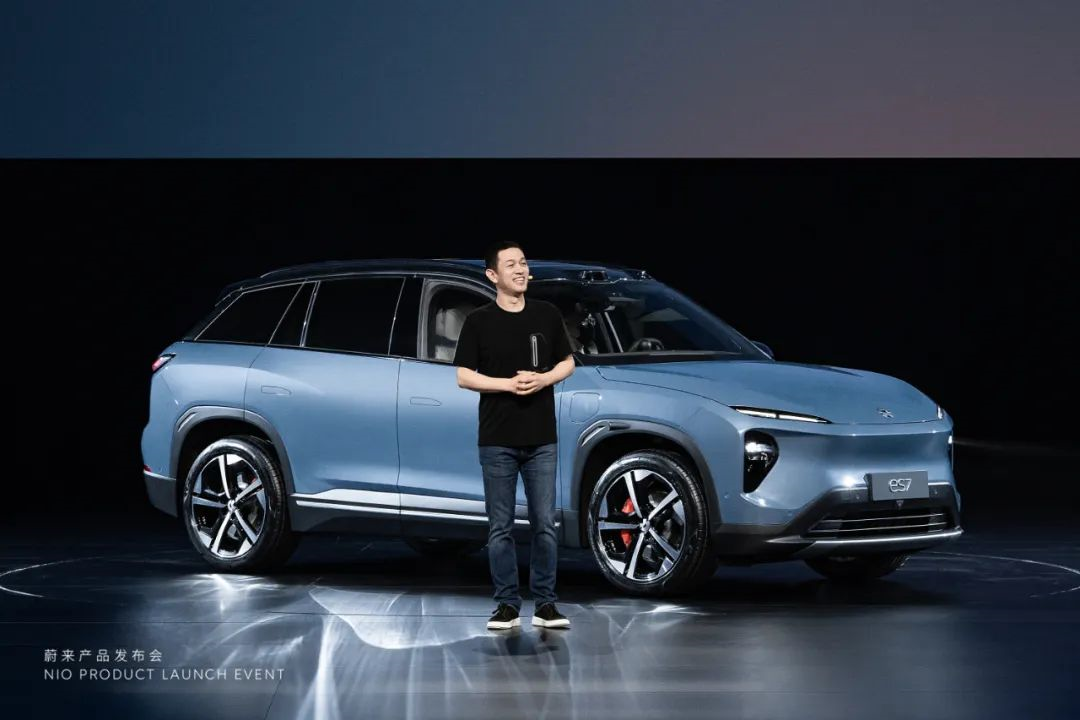
ES7 is also the first SUV model powered by NIO’s second-generation high-efficiency electric drive platform. It uses silicon carbide power modules, with a front 180kW permanent magnet motor and a rear 300kW induction motor, delivering a maximum power of 480kW and peak torque of 850N·m. Its performance parameters are identical to ET7 but with slight differences in actual performance due to the difference in the vehicle model. ES7 can go from 0 to 100km/h in 3.9 seconds and has a maximum driving range of 930km with a 150-degree battery pack. The shortest braking distance is 33.9m, and it comes standard with Brembo high-performance four-piston calipers and air suspension across the whole lineup.
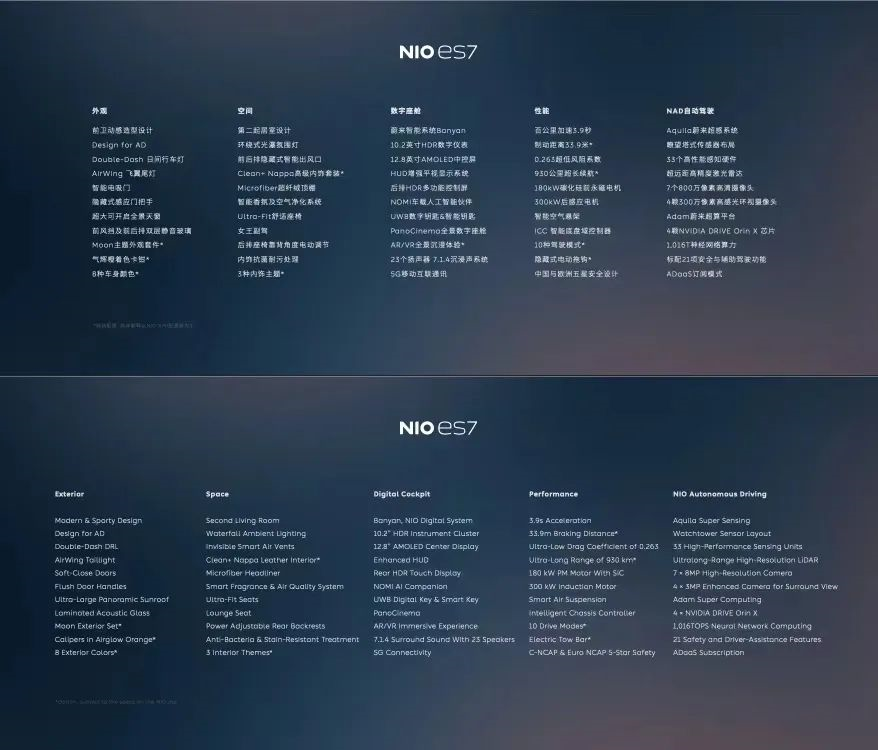
Moreover, ES7 is the first SUV model to offer AR/VR support. Similar to ET5, ES7 is equipped with AR head-mounted display, co-developed with NREAL, which projects a massive 6-meter field of view that is equivalent to a 201-inch screen.
Now let’s talk about the cabin design. Li Bin, the founder of NIO, introduced that ES7’s design concept perfectly interprets the “Second Living Room” experience, or as known as ‘NIO House’ in common language.
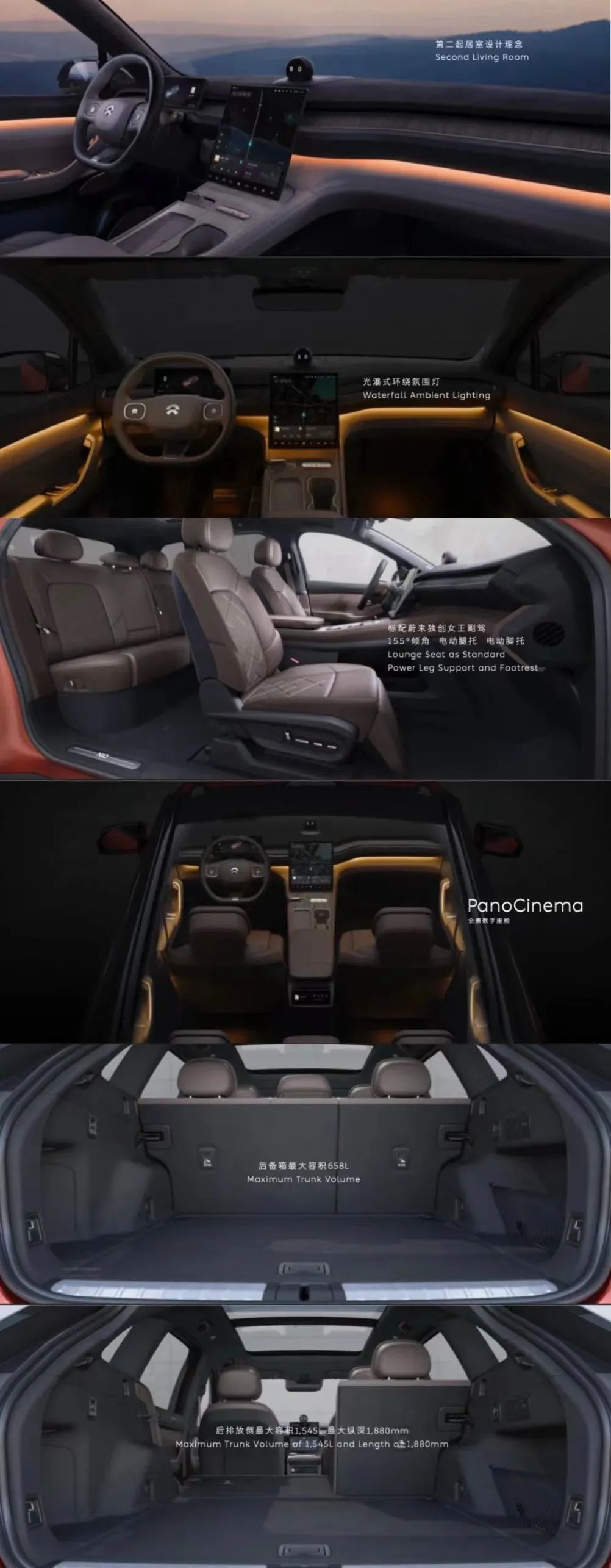
As for the highlights, the most significant increase is the towing capacity.
ES7 is the first batch of vehicles in China that has passed the regulation certification and can legally tow caravans on the road. You can choose to install a hidden electric tow hook, with a maximum towing capacity of 2 tons and supporting power supply to the towed equipment during the journey. Li Bin said that in addition to caravans, you can also tow mountain bikes and motorboats.
In other words, the lifestyle becomes the most prominent innovation of the ES7.
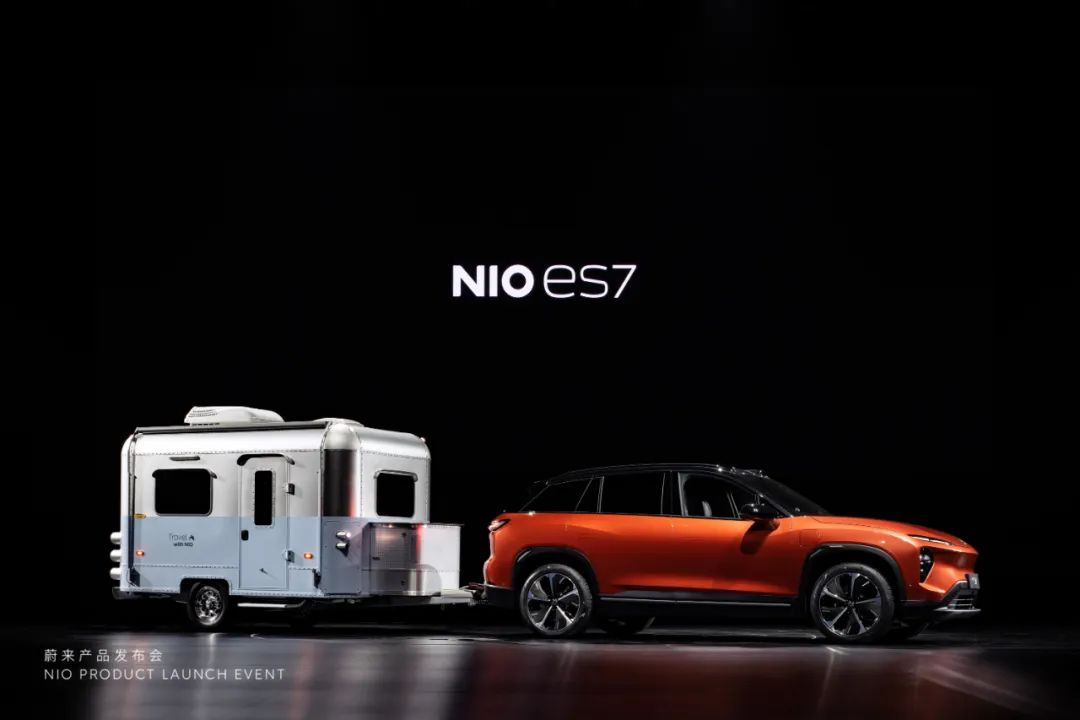
This is also very similar to Apple.# 苹果手机用生活方式苟住十年,从一件科技智能产品苟成了一件时尚单品,诡异的是,漫长的岁月没有磨灭我们对新苹果的热情,即便我们一早预期它能带来的惊喜大抵是不值得的。在底层,支持我们坚持起夜的动力是,依然相信改变人类命运的下一个产品,有很大的可能会来自苹果。
Today, when it comes to ES7, I have a little bit of expectation for it. Although I anticipate it to be a bit dull, I cannot help but pay attention to it. This is not only because, whether it’s petrol or electric, “ES7 is the ceiling for large SUVs in the 400,000 to 500,000 price range”; but also because if the next innovation in intelligent electric vehicles is to occur, NIO is very likely to be the origin.
In fact, the most mind-blowing conference in the intelligent vehicle field in the past year was the release of ET7 by NIO in 2021. In the following year and a half, almost all intelligent vehicles were hardly talking about these items:
- Do I have a LiDAR sensor?
- Can I acquire NVIDIA and Qualcomm’s newest chips?
- How can I support urban domain automatic driving?
These points, which are not yet practically utilized, are becoming an indicator of intelligent certification for the industry, which is a standard set forth by NIO.
Lei Jun believes that people’s blind anticipation of Apple “is just because it is currently the wealthiest technology company in the world,” and that “snobbery is the terminal illness of humanity.”
NIO is obviously not yet the world’s wealthiest automobile company. It is working hard to keep being wealthy. However, through several small campaigns, they have proven that their strategy is complete, their outlook is clear, and their decision-making is accurate on the road to greatness.
In contrast to ES7, the first half of the content presented in last night’s conference more vividly demonstrated this point. They unveiled an updated intelligent system, Alder Yang, which will be installed on the new 866. Every old 866 model can also be upgraded for a fee of 9,600 yuan, with an option to add 5G for 12,600 yuan.
The upgrade features include a processor upgrade to 8155, which increases CPU/GPU capabilities by 100%, and 256 GB of ultra-large storage space. The startup response and interaction efficiency of the entire vehicle have been comprehensively enhanced, increasing startup speed by 37%, application cold start speed by 55%, and responsiveness by 18%. At the same time, NOMI’s cold startup wake-up time will increase by 38%, and instruction response speed will increase by 12%. If you choose to add 5G connectivity, the transmission speed in ideal conditions can improve by a factor of 10.Beyond chips, there are hardware upgrades available for sensors, including an 800W pixel high-definition front-facing DVR camera that supports 4K ultra-high-definition video recording and 5-way cooperation; four 300W pixel high-sensitivity panoramic special cameras, which, in combination with the new exterior mirror assembly, improve the vertical visual field by 24%; and a 250W cabin camera that provides a better in-car selfie experience.
For older models, even though they are still far behind the second-generation intelligence that incorporates supercomputing platforms and super-sensing systems based on the NT2.0 platform (i.e., the 577), NAD cannot be achieved; but in terms of interactive experience, the metrics released at least demonstrate that they know what they are doing.
In terms of hardware upgrades, the architecture designed since 2014 is not only very advanced, but also reflects the systematic consideration of planning based on the name alone. Based on the NT1.0 platform, the first-generation system was called Aspen, and was installed on the old ES8/ES6/EC6 models; the second generation is called Alder.
This is not just a coincidence of choosing two types of wood with a name starting with an “A.” As someone who once aspired to be a carpenter, I cannot allow you to miss out on NIO’s naming conventions. Aspen and Alder look similar and serve similar purposes, but the latter is more expensive and durable. Coincidentally, Aspen usually only has a lifespan of five years.
It’s been around five years since the first version of the ES8 was released. We often use very humanistic perspectives to explain the shortcomings of technology, such as “car owners are inferior to dogs.” This is the inevitable cost of the commercialization of technology, and we should recognize this cost and contribute some value to society. However, there are obviously also compatible solutions.
Li Bin said that NIO has already made software and hardware preparations to maintain a first-generation model for fifteen years in terms of organizational structure. The C-wood platform of NT3.0 will be released in 2024.
Some people who simply focus on their work may exert pressure on their peers. This world is really cruel.
This article is a translation by ChatGPT of a Chinese report from 42HOW. If you have any questions about it, please email bd@42how.com.
